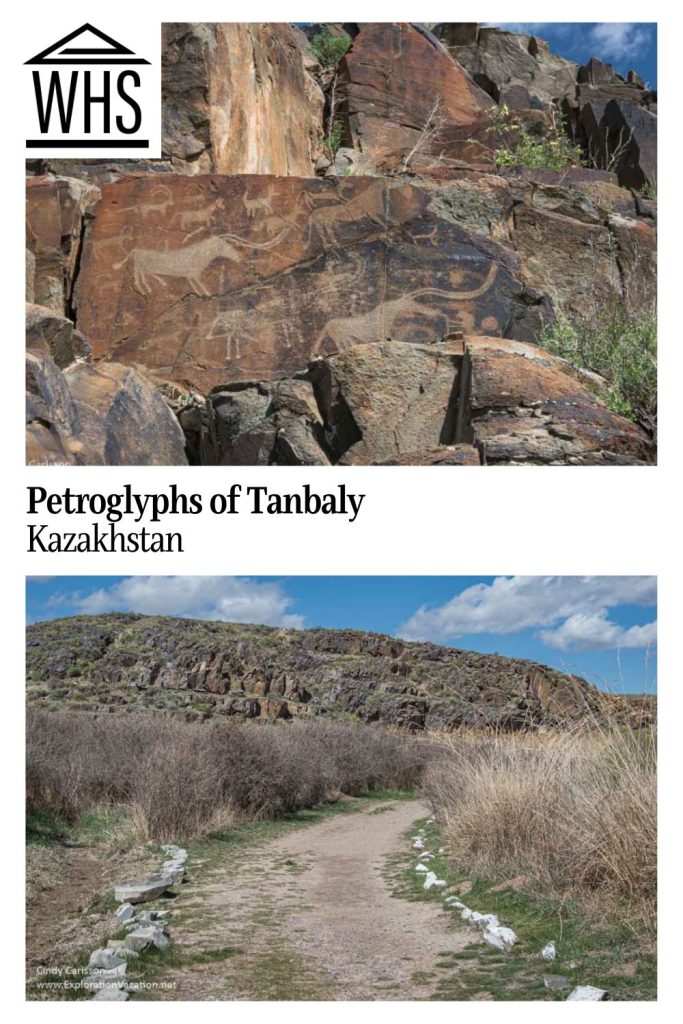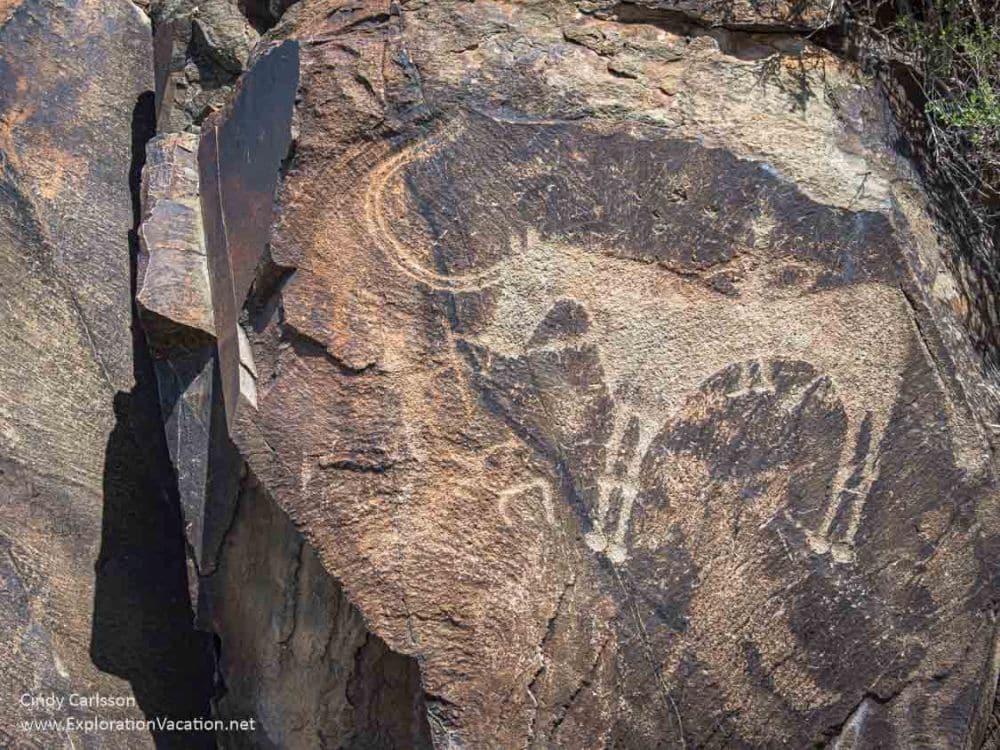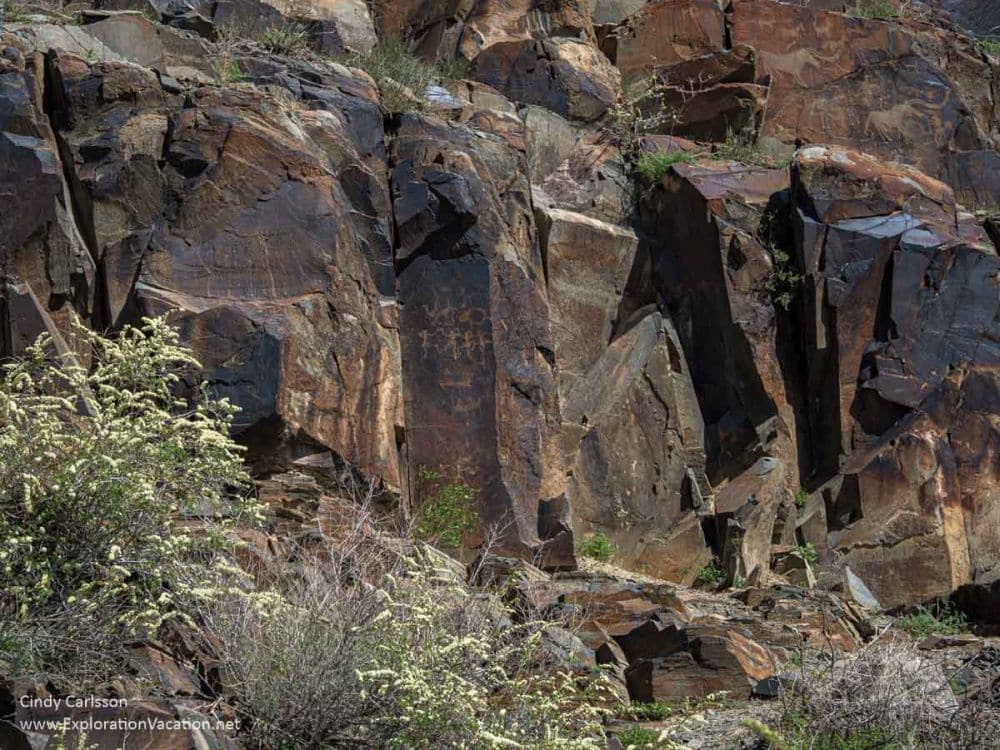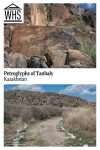Petroglyphs of the Archaeological Landscape of Tanbaly
By Cindy Carlsson
What is Petroglyphs of the Archaeological Landscape of Tanbaly?
The Archaeological Landscape of Tanbaly (Tamgaly) in Kazakhstan is a lush area that provided water and shelter to groups of pastoral people at least as early as the middle Bronze Age (2500-1900 BC). The UNESCO site covers about 3½ square miles (900 hectares) around Mount Tanbaly, and includes about 5,000 petroglyphs (rock carvings) that date from the Bronze Age through the 20th century.
Within this area, the World Heritage Site focuses on 48 locations with petroglyphs and associated altars, burial sites, and settlements. Of these, the most important are five sites along the central canyon’s steep walls that display about 3,000 images carved into the rock face. Many of these petroglyphs are particularly early, finely cut, and unique.

Disclosure: This article contains affiliate links. Making a purchase through an affiliate link will mean a small commission for this website. This will not affect your price. Privacy policy.
Why are the Tanbaly Petroglyphs a UNESCO World Heritage Site?
While petroglyphs and other rock art can be found throughout Central Asia, those at Tanbaly stand out for their size, quality, and unique images. However, their designation as part of a World Heritage Site seems based more on what they tell us about the people who created them than on the quality of the art itself.

UNESCO describes their value thus: “The dense and coherent group of petroglyphs, with sacred images, altars and cult areas, together with their associated settlements and burial sites, provide a substantial testimony to the lives and beliefs of pastoral peoples of the central Asian steppes from the Bronze Age to the present day.”
What can you expect on a visit to Archaeological Landscape of Tanbaly?
This is a very isolated site. While you pass through a few small towns along the way, the UNESCO site itself is located in a vast, windswept area. It’s mostly inhabited by herds of horses and flocks of sheep and the semi-nomadic herders who move them between summer grazing areas.
The parking area can accommodate a lot of vehicles. Only a handful of other visitors were there the day we arrived. However, even with many more visitors, there is space to spread out between each group of petroglyphs. And, while it looks like a long hike out to the hills where the petroglyphs are located, it’s an easy walk that isn’t as far as it looks.

We had a guide, but even without a guide, you would easily find the petroglyph sites and see a lot of rock art. (Petroglyphs are actually carved right into the rock.) Clearly-labeled trails with information at each trail head lead to the five most significant groups:
- Group 1 has 111 petroglyphs, many of which are sketches and unfinished Bronze Age drawings.
- Group 2 comprises 432 petroglyphs, including the oldest and most expressive.
- Group 3 has 444 Bronze Age petroglyphs, but many also have additional carvings on them from later periods. These are along an easy, relatively flat trail.
- Group 4 is made up of 700 petroglyphs. Most date to between the early Iron Age through the 19th century. However, the group also includes a unique Bronze Age panel depicting the divine figures of an ancient cult, warriors in battle, and more.
- Group 5 has more than 1000 carvings, including Bronze Age depictions of animals, carts pulled by a camel, sunhead figures, and some of the same deities found in group 4. This group has a lot of petroglyphs you can see from below. However, a path that includes a bit of scrambling over loose rock takes you right up to many of them (Don’t touch them!), over the top of the rock outcrop, and back down to the main trail.
- A route is also being created to take visitors to two other (more distant) sites.
Like most petroglyphs, the light makes a big difference in how easy they are to spot. However, even with the sun glaring down from directly overhead (or clouds turning everything a hazy blue) you will be able to easily see a lot of petroglyphs.
The scale of the site and the number of images cut into the rock is hard to comprehend. Once you get to Group 2, images literally cover the rock faces. It was easy to spot hundreds of them even under a glaring midday sun. But our guide pointed out many I would have missed. Of course, he also explained things that would have made no sense and pointed out easy-to-miss details.
As a bonus, if you visit in spring, you will likely find many flowers in bloom. These include a few species endemic to Central Asia.

Is the Tanbaly petroglyphs archeological site worth visiting and what sorts of travelers would like it?
If you are planning to visit this part of Central Asia, the Tanbaly petroglyphs definitely should be on your list. It’s an impressive site that can be visited relatively easily as a day trip from Almaty, a city you will likely be in or transiting through anyway.
Book your accommodations in Almaty.
You will love this site if you have any interest at all in prehistoric art or culture. However, even if you think ancient rock art doesn’t sound very interesting, these are probably dramatic enough to impress you. And, while the meaning of some images is thought to be understood, many remain a mystery. You can easily make a game just of seeing how many you can find and identify, and then making up stories for those that remain mysterious! Or just enjoy a pleasant hike through an ancient conversation carved in stone.
It took us a little more than an hour to walk through Groups 3 and 5 at a reasonably leisurely pace. Plan to spend between 1-3 hours, depending on your level of interest and mobility. You can view some, but not all, sites from a relatively wide, flat, unpaved path.
If you are looking for more UNESCO World Heritage Sites in the area, the Burana Tower, part of the Silk Roads Network of the Chang’an-Tianshan Corridor World Heritage Site in Kyrgyzstan, is about a 3-hour drive from Tanbaly. A couple more of the Silk Road sites at Talgar, Karamergen and Aktobe in Kazakhstan are within 4-5 hours’ drive.

Tips for visiting the Petroglyphs of the Archaeological Landscape of Tanbaly
There are two sites with petroglyphs that are often mistaken for the other both online and on mapping apps.
- The Tanbaly or Tamgaly World Heritage Site is located northwest of Almaty.
- The other site, Tamgaly Tas, is a 17th-century Buddhist site north of Almaty. It also has petroglyphs, as well as cave paintings. Both sites seem to be managed out of the Tanbaly Reserve Museum, which is the visitor center for the UNESCO site.
Tickets should be available at the visitor center, which appeared to be closed when I was there. It’s some distance from the site itself, so – even if it looks closed – check in there before heading out to the actual site.
You can easily visit on your own, but this is a place where a guide is helpful. A trained guide that speaks your language can explain what you are seeing. But even a guide that doesn’t speak your language will be able to point out things you would miss. You should be able to book a guide when you get your tickets. Guides who speak Kazakh, Russian or English can be booked through the visitor center. However, it would be best to book English-speaking guides in advance. Booking a guide for an hour will cost about the same as an entry ticket for a foreign visitor.
Wear good shoes with closed toes. The trail into the site is flat, but dusty. However, some “trails” require a bit of scrambling over loose rock. And there are snakes, scorpions, spiders, and other poisonous critters about.
Wear sunscreen and a bug spray that repels ticks.
Bring plenty of water and wear a hat. There is almost no shade and the sun can be intense at any time of year.
If you can, choose a sunny day, but avoid a midday visit. That’s especially true in summer when the area gets very hot. But at any time of year, midday sunlight makes it harder to see the petroglyphs. You’ll still see plenty even with the sun directly overhead, but in most areas you will see more if the sun is at a bit of an angle. And note that the site might close if it is rainy.
Afraid of heights or unable to maneuver on steep rocky paths? Let your guide know. Most of the trails interconnect and they can tell you how to best avoid climbing. You can see a lot of petroglyphs right from relatively flat trails.
Book your accommodations in Almaty.
Do NOT touch the petroglyphs. Oils from your hand can damage them.
There is a picnic area along the parking lot. It is very basic and quite dusty, but it has a couple of picnic tables with shade, and there’s a a toilet.
Where is the Tanbaly Petroglyphs World Heritage Site?
The Tanbaly archeological site is located about 100 miles (165 km) northwest of Almaty. It should take less than 3 hours to get there.
The Tanbaly visitor center and museum is in Karabastau village at 43°46’42.2″N 75°34’44.9″E. You can’t miss it. It’s a big, modern building that’s easy to spot for some distance.
The parking area and entrance to the site’s trails is at 43°48’24.42″ N 75°32’33.94″ E. Without the coordinates, Google maps directs you into the middle of the site along a road that no longer exists. But it does first take you through the parking area, so it still should get you there. Your entry fee includes parking.
You can hire a car or car and driver in Almaty. Or book at day tour to the site.
There is no bus service to the site or anywhere within walking distance.
For more information about Petroglyphs of the Archaeological Landscape of Tanbaly, including its opening hours and admission fees, see its official website. (Available in English, although you might have to reset it to English occasionally.)
Have you been to see the Petroglyphs of Tanbaly? If so, do you have any additional information or advice about this UNESCO World Heritage site? Please add your comments below!

